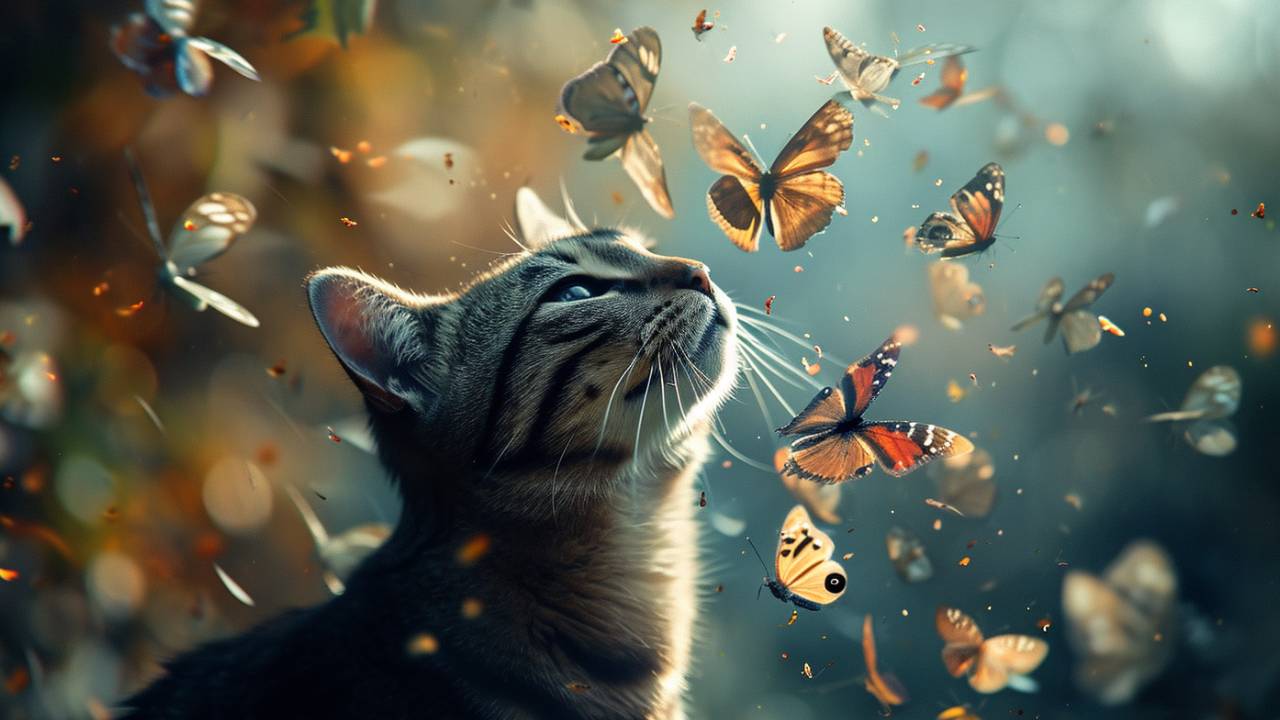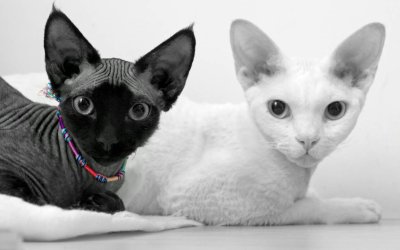Spend a little time on YouTube, and you’ll find a lot of charming cat videos. While having these fun moments, we realize how cats are really into “things” they love. At American Paws Club, we believe understanding what brings your cat joy is part of the deeper connection between pets and their people.
That’s why we’ve put together this top 10 to help you uncover what do cats like. We’ve even included a few favorite video links so that you can see these little joys in action and maybe even share a moment or two with your own furry friend.
1. Soaking Up the Sun
Video Summary:
This short video shows a cat lounging in a sunbeam and completely at ease. It’s a simple and undeniably cute.
Cats often seek out sunny spots inside the home. This behavior is driven by instinct and biology. They have a higher resting body temperature than humans. The average feline body temperature ranges between 100.5°F and 102.5°F. By lying in the sun, cats conserve energy. They don’t have to work as hard to stay warm, especially during colder seasons or in drafty homes.
Sunlight also helps them feel secure. The warm space allows a cat to relax without needing to stay on alert. This is important for indoor cats, who rely on safe spaces to manage stress.
To support this natural behavior:
- Place a soft mat or bed near a window where sunlight comes through
- Keep blinds or curtains open during the day
- Add a cat tree or perch in a sunlit corner
- Monitor the area to make sure it doesn’t get too hot, especially in the summer
Providing access to sunlight is one easy way to meet a cat’s comfort needs. It’s a simple routine that supports both physical regulation and emotional ease.
This is a common answer to the question, “What does a cat like?” They like warmth in the form of quiet, sunny rest.
Related Post: How Long Do Cats Stay in Heat + What to Expect
2. Climbing and Perching Up High
Video Summary:
This short clip shows a cat confidently climbing and settling at the highest perch, calmly observing the room below.
Cats enjoy climbing and finding elevated spots. This behavior is rooted in their instincts as both predators and prey. In the wild, climbing allows cats to survey their territory and stay out of reach of potential threats.
Being up high gives domestic cats a sense of control over their environment. It also reduces stress by creating a safe and quiet space away from noise.
Cats often choose elevated spots to nap, observe, or retreat. For indoor cats, access to vertical space is a key form of environmental enrichment.
To support this behavior:
- Provide a multi-level cat tree or wall-mounted shelves
- Clear space on sturdy furniture, and they already gravitate toward it
- Place elevated perches near windows for added stimulation
- Avoid scolding your cat for climbing unless it’s unsafe
This is another answer to the question, “What does a cat like?” They like to be up high where they feel safe, curious, and in control of their surroundings.
3. Hiding in Boxes (or Bags, Drawers, or Luggage)
Video Summary:
This video captures a cat squeezing into a cardboard box, then peeking out with wide eyes. It’s funny and exactly the kind of moment cat owners recognize.
Cats hide in boxes or even open drawers because these enclosed spaces create a sense of safety. When a cat is confined to a contained area, it feels protected from outside threats.
This behavior is instinctual. In the wild, cats often seek small hiding spots to rest or escape predators. Hiding also helps cats regulate stimulation. When they feel overwhelmed, they’ll retreat to a secure space.
These hiding spots also retain warmth as the traps heat, which adds another layer of comfort.
To support this natural behavior:
- Keep a few cardboard boxes around your home
- Offer a covered cat bed or soft-sided tunnel
- Let your cat explore open drawers or luggage if it’s safe
- Avoid disturbing your cat when they’ve chosen to hide
This behavior is another clear answer to the question, “What does a cat like?” They like privacy, comfort, and the option to retreat when they need space.
4. Chasing and Pouncing
Video Summary:
In this video, a playful kitty launches across the room after another cat, leaping and darting with quick precision. It’s energetic and very typical of healthy feline play.
Chasing and pouncing are behaviors that mimic hunting. Even well-fed indoor cats have a natural drive to stalk and capture. This kind of movement helps cats burn energy and maintain physical health.
Furthermore, regular activity helps reduce anxiety, especially in indoor cats who don’t get outdoor stimulation. It also strengthens your bond when you take time to engage directly. Short bursts of play are usually best.
To support this natural behavior:
- Use wand toys or feather teasers to mimic prey movement
- Rotate toys to keep your kitty interested
- Avoid using your hands as play objects to prevent aggressive behavior
- Try short play sessions before meals to simulate a full hunting cycle
If you’re wondering how to make a cat happy, this is one of the most effective ways to do so. Kitties need to play. It satisfies instinct and improves their quality of life.
5. Birdwatching or “Window TV”
Video Summary:
This video shows a cat perched quietly in front of a TV, its eyes tracking birds on the screen. The cat is calm but completely alert, captivated by the motion.
Cats are visual hunters. Even when they’re not chasing, they love to observe. Birdwatching, often referred to as “cat TV,” is a low-stress form of mental stimulation for indoor cats.
Watching movement outside or on screen keeps your cat engaged. This kind of visual enrichment reduces boredom and may even prevent behavioral issues caused by overstimulation.
It’s also relaxing. The ability to watch without having to act gives your cat a balance of stimulation and calm.
To support this behavior:
- Place a perch or cat tree near a window with a view
- Leave the blinds or curtains slightly open during daylight hours
- Add a bird feeder outside the window (at a safe distance)
- Keep the area clean and secure, especially if the window is open
When thinking about what does a cat like, this one is simple. They like to watch the world go by. It’s instinctive and mentally healthy for them.
Related Post: 5+1 Best TV Shows for Cats to Watch
6. Getting Pet (On Their Terms!)
Video Summary:
In this short clip, a cat leans into a gentle chin scratch, then quickly walks away when it’s had enough. It’s a clear reminder that affection with cats is all about timing.
Many cats enjoy being pets, but only when they initiate the contact. Unlike dogs, cats are more selective with physical affection. They need to feel safe and in control.
Petting should be based on reading your cat’s body language. Signs of comfort include purring, gentle head butts, and leaning in. Signs to stop include tail flicking, flattened ears, or sudden movements away.
Affection, when offered the right way, builds trust. It also lowers stress and reinforces your bond.
To support this behavior:
- Let your cat approach you first
- Focus on areas they typically enjoy—like behind the ears, under the chin, or along the cheeks.
- Avoid petting the belly unless your cat enjoys it
- Stop if they show signs of discomfort
Want to make a cat happy? Respect their space and respond to their signals.
7. Napping. All. Day. Long.
Video Summary:
The video shows a kitty sprawled out on a bed, completely still with paws tucked and eyes shut. It’s a peaceful moment that captures how much cats value sleep.
Cats are professional nappers. On average, they sleep between 12 and 16 hours a day. For kittens and older cats, it can be even more. In the wild, cats need bursts of energy for hunting. Sleeping allows them to recover and stay alert when needed.
Indoor cats still follow this natural rhythm. Rest is essential for both physical health and emotional regulation.
To support this behavior:
- Create quiet zones where your cat won’t be disturbed
- Place cozy beds or blankets in low-traffic areas
- Keep the lighting soft in nap-friendly spaces
- Let your kitty nap undisturbed, even if it’s inconvenient
So, what does a cat like? They like sleep and lots of it.
8. Grooming (and Being Groomed)
Video Summary:
This video shows a cat meticulously grooming itself, carefully licking its paws and ears. It’s a calming activity that shows how important this habit is to cats.
Grooming is a form of self-soothing, body temperature regulation, and even social bonding. Cats groom to remove dirt, distribute natural oils, and cool down through the evaporation of saliva. It also helps them relax. When cats groom each other or allow you to groom them, it signals trust and connection.
Some cats love brushing once it becomes part of their routine. A monthly toy and treat box can sneak in grooming goodies or tasty snacks that turn brush time into quality bonding time.
To support this behavior:
- Brush your cat regularly with a soft-bristle or grooming glove
- Use gentle, slow movements and start with short sessions
- Focus on areas where they naturally groom—like the back and sides
- Stop if they seem overstimulated or walk away
Grooming is a key part of feline wellness. It keeps their coat healthy and their stress levels low. For many cats, it’s also a way to connect with their humans.
9. Routine and Familiarity
Video Summary:
This short clip shows a cat going through its routine. It’s predictable and comforting to watch.
Cats are highly routine-oriented animals. They feel safest when their environment and daily patterns are consistent. Changes in routine can cause stress, especially for indoor cats who rely on their surroundings to feel secure.
Feeding schedules, playtime, and even quiet hours help cats build a sense of control. Predictability reduces anxiety and supports long-term behavioral stability.
That said, occasional changes are sometimes necessary. The key is to introduce them gradually.
To support this behavior:
- Feed your cat at the same time each day
- Keep their favorite spaces consistent
- Avoid moving litter boxes, beds, or food dishes too often
- If you need to change something, do it in small steps
Want to make a cat happy? Start with stability. Routine is a major part of how cats feel safe and comfortable at home.
10. Being Near Their Favorite Human
Video Summary:
In this video, a cat casually follows its human from room to room, eventually curling up nearby while they relax. This is really cute!
Cats are often labeled as independent, but many enjoy being near their people. They may not always sit in your lap, but they’ll often settle nearby, watch what you’re doing, or follow you around the house.
This behavior shows trust and connection. When a cat chooses to be near you, it means they see you as part of their safe space. Being close to their humans also helps regulate their emotions.
To support this bond:
- Speak to your cat gently and regularly
- Let them stay close without forcing attention
- Offer affection when they initiate it
- Respect their boundaries while being present
If you’re dreaming of a little furry companion, check out our purebred kittens for sale, which are ready for adoption.
Bonus Section: How to Read What Your Cat Likes
Cats don’t always tell us what they enjoy at least not in obvious ways. But if you pay close attention to their body language and daily habits, you’ll start to notice patterns. Every cat has different preferences. Thus, learning them is part of the bond you share.
Here are a few key things to watch:
Body language basics:
- Ears forward, relaxed tail, and slow blinking usually signal contentment
- Flattened ears, a twitching tail, or a stiff body often mean your cat wants space
- If they rub against you or follow you from room to room, they’re seeking connection
Tail flicks vs. belly rolls:
- A flicking tail during petting usually means “I’ve had enough.”
- When a cat shows you their belly, it’s often a sign of trust, not always an invitation to touch
- Let your pet set the pace during grooming or play
Trial-and-error enrichment:
- Offer different types of toys and see which ones they return to
- Try window perches, boxes, and cozy bedding in various places
- Introduce new grooming tools gently and observe reactions
Purring with Joy
Did you spend some time watching each video? When we did this part, we were happy to realize that cats can also give us relaxing moments. This list (though let’s be honest, they were pretty cute) was about recognizing those small, everyday moments that say a lot about what your cat needs to feel understood.
If you’re looking for more ways to support your cat’s well-being, find trusted products and pet parent guides at American Paws Club, where a happy life with pets always starts with care.

FAQs
How much playtime does my cat need daily?
On average, cats require 15 to 30 minutes of interactive playtime spread throughout the day.
Is it true that not all cats respond to catnip?
Yes, not all cats have a solid reaction to catnip. Sensitivity is genetic, and some cats may not be interested.
Why do cats enjoy hiding in boxes?
Boxes offer security and allow cats to stalk “prey” (imaginary or real), fulfilling their natural hunting instincts.
What if my cat seems interested in something other than interactive toys?
Cats have varied preferences. Experiment with different toys to find what captures your cat’s interest, and consider rotating toys to keep things exciting.
What are some things that most cats dislike?
Cats generally dislike sudden loud noises, being handled roughly, unfamiliar scents, and changes in their environment or routine.
Do cats dislike changes in their environment?
Cats are creatures of habit, and sudden changes in their surroundings, such as moving furniture or rearranging their territory, can make them uneasy or stressed.






0 Comments